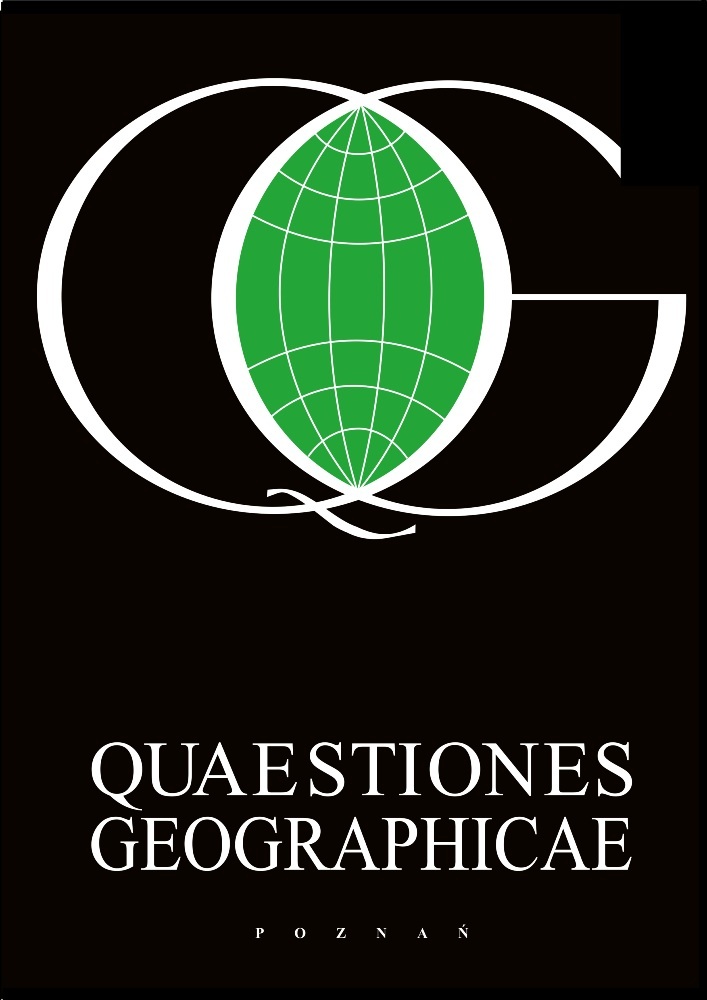Abstract
Urban growth and fractality is a topic that opens an entrance for a range of radical ideas: from the theoretical to the practical, and back again. We begin with a brief inventory of related ideas from the past, and proceed to one specific application of fractals in the non-Euclidean geometry of Manhattan space. We initialize our discussion by inventorying selected existing knowledge about fractals and urban areas, and then presenting empirical evidence about the geometry of and movement in physical urban space. Selected empirical analyses of minimum path distances between places in urban space indicate that its metric is best described by a general Minkowskian one whose parameters are between those for Manhattan and Euclidean space. Separate analyses relate these results to the fractal dimensions of the underlying physical spaces. One principal implication is that theoretical, as well as applied, ideas based upon fractals and the Manhattan distance metric should be illuminating in a variety of contexts. These specific analyses are the focus of this paper, leading a reader through analytical approaches to fractal metrics in Manhattan geometry. Consequently, they suggest metrics for evaluating urban network densities as these represent compression of human activity. Because geodesics are not unique in Manhattan geometry, that geometry offers a better fit to human activity than do Euclidean tools with their unique geodesic activities: human activity often moves along different paths to get from one place to another. Real-world evidence motivates our specific application, although an interested reader may find the subsequent "prospect" section of value in suggesting a variety of future research topics that are currently in progress. Does "network science" embrace tools such as these for network compression as it might link to urban function and form? Stay tuned for forthcoming work in Geographical Analysis.
References
Arlinghaus S., 1985. Fractals take a central place. Geografiska Annaler, Journal of the Stockholm School of Economics, 67B: 83-88. DOI: https://www.doi.org/10.1080/04353684.1985.11879517.
Arlinghaus S., 2010. Fractals take a non-Euclidean place. Solstice: An Electronic Journal of Geography and Mathematics, XXI, 1. Institute of Mathematical Geography, Ann Arbor, http://www.imagenet.org/. http://www.imagenet.org/
Arlinghaus S. & Arlinghaus W., 1989. The fractal theory of central place hierarchies: A Diophantine analysis of fractal generators for arbitrary Löschian numbers. Geographical Analysis: An International Journal of Theoretical Geography, 21(2): 103-121. DOI: https://www.doi.org/10.1111/j.1538-4632.1989.tb00882.x.
Arlinghaus S., Arlinghaus W. & Harary F., 1993. Sum graphs and geographic information. Solstice: An Electronic Journal of Geography and Mathematics, IV, 1. Institute of Mathematical Geography, Ann Arbor, http://www-personal.umich.edu/~copyrght/image/solstice/sols193.html. http://www-personal.umich.edu/~copyrght/image/solstice/sols193.html
Arlinghaus S. & Batty M., 2006. Zipf's hyperboloid? Solstice: An Electronic Journal of Geography and Mathematics, XVII, 1. Institute of Mathematical Geography, Ann Arbor, http://www.imagenet.org/. http://www.imagenet.org/
Arlinghaus S. & Batty M., 2010. Zipf's hyperboloid revisited: Compression and navigation - canonical form. Solstice: An Electronic Journal of Geography and Mathematics, XXI, 1. Institute of Mathematical Geography, Ann Arbor, http://www.imagenet.org/. http://www.imagenet.org/
Arlinghaus S. & Nystuen J., 1990. Geometry of boundary exchanges: Compression patterns for boundary dwellers. Geographical Review, 80(1): 21-31. DOI: https://www.doi.org/10.2307/215895.
Arlinghaus S. & Nystuen J., 1991. Street geometry and flows. Geographical Review, 81(2): 206-214. DOI: https://www.doi.org/10.2307/215984.
Batty M. homepage: http://www.casa.ucl.ac.uk/people/MikesPage.htm
Batty M. & Longley P., references listing: http://www.casa.ucl.ac.uk/people/MikesPage.htm
Benguigui L. & Daoud M., 1991. Is the suburban railway system a fractal? Geographical Analysis, 23: 362-368. DOI: https://www.doi.org/10.1111/j.1538-4632.1991.tb00245.x.
Elert G., 1995-2007. About dimension. The chaos hypertextbook: http://hypertextbook.com/chaos/33.shtml
Griffith D., Vojnovic I. & Messina J., 2010. Distances in residential space: Implications from estimated metric functions for minimum path distances. Paper to be submitted to Journal of Transport Geography.
Hausdorff& Besicovitch, historical reference: http://en.wikipedia.org/wiki/Hausdorffdimension
Mandelbrot B., 1982. The fractal geometry of nature. W.H. Freeman, New York.
Ord J., 1975. Estimation methods for models of spatial interaction. Journal of the American Statistical Association, 70: 120-126. DOI: https://www.doi.org/10.1080/01621459.1975.10480272.
Rodin V. & Rodina E., 2000. The fractal dimension of Tokyo's streets. Fractals, 8: 413-418. DOI: https://www.doi.org/10.1142/S0218348X00000457.
Shen G., 1997. A fractal dimension analysis of urban transportation networks. Geographical & Environmental Modelling, 1: 221-236.
Wikipedia, Fibonacci coding: http://en.wikipedia.org/wiki/Fibonacci_coding
License
This content is open access.
